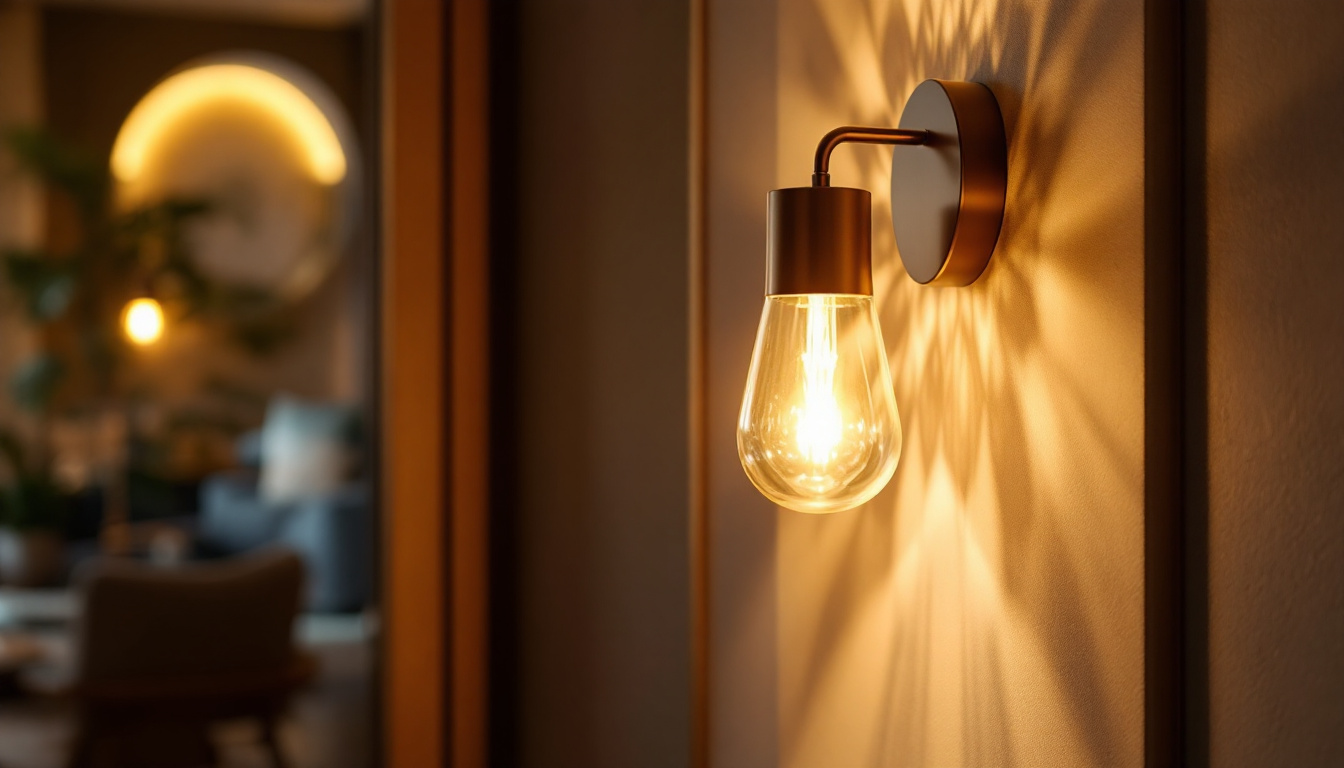

As the demand for modern lighting solutions continues to rise, recessed lighting remains a popular choice for both residential and commercial spaces. However, the process of replacing these fixtures can often seem daunting, especially for lighting contractors looking to ensure a seamless installation. This article delves into the essential secrets and techniques that can elevate the quality of recessed light replacement, providing contractors with the knowledge necessary to excel in their craft.
Recessed lighting, also known as can lighting or downlighting, is a type of lighting fixture that is installed into a hollow opening in the ceiling. This design allows the light to be unobtrusive while providing ample illumination. It is favored for its sleek appearance and versatility, making it suitable for various applications, from ambient lighting to task lighting. The ability to blend seamlessly into the ceiling creates a clean, modern look that enhances the overall aesthetic of any space, whether it be a cozy living room or a sophisticated office environment.
Before diving into the replacement process, it is crucial for contractors to understand the different components of recessed lighting. These include the housing, trim, and bulb. Each element plays a significant role in the overall performance and aesthetic of the lighting fixture. Familiarity with these components will aid in making informed decisions during the replacement process. For example, selecting the right bulb type—such as LED, halogen, or incandescent—can greatly impact energy efficiency and light quality. Moreover, understanding the wattage and lumens output helps in achieving the desired brightness for various settings.
There are several types of recessed lighting available, each designed for specific applications. For instance, new construction housings are ideal for homes that are still under construction, while remodel housings are designed for retrofitting existing ceilings. Understanding the differences between these types is essential for contractors to recommend the best options to their clients. Furthermore, there are also IC-rated housings, which are suitable for insulated ceilings, ensuring safety and preventing overheating. This is particularly important in energy-efficient homes where insulation is a key factor in maintaining temperature control.
Additionally, contractors should be aware of the various trim styles available, such as baffle, reflector, and adjustable trims. Each style affects the direction and quality of the light output, allowing contractors to create tailored lighting solutions that meet their clients’ needs. Baffle trims, for example, are designed to reduce glare and provide a softer light, making them perfect for living spaces. Reflector trims, on the other hand, are ideal for highlighting artwork or architectural features, as they direct light more intensely. Adjustable trims can be angled to focus light on specific areas, making them a versatile choice for task lighting in kitchens or workspaces. By understanding these nuances, contractors can enhance the functionality and ambiance of their clients’ spaces, ensuring a well-lit environment that complements the design.
Proper preparation is key to a successful recessed light replacement project. This involves assessing the existing fixtures, gathering the necessary tools, and ensuring safety measures are in place. A thorough evaluation of the current lighting setup will help identify any underlying issues that may need to be addressed before installation.
To ensure a smooth replacement process, contractors should have the right tools on hand. Essential tools include a voltage tester, wire strippers, a screwdriver, and a drill. Additionally, having a selection of replacement bulbs and trims readily available can expedite the process and minimize downtime.
It is also important to consider the materials used in the installation. High-quality wiring and connectors are essential for ensuring the longevity and safety of the lighting system. Contractors should always opt for materials that meet industry standards to guarantee a reliable installation.
Safety should always be a top priority when working with electrical fixtures. Before beginning any replacement work, contractors must turn off the power to the circuit at the breaker box. Using a voltage tester to confirm that the power is off is a critical step in preventing electrical shocks.
Additionally, wearing protective gear such as gloves and safety goggles can help minimize the risk of injury during the installation process. Contractors should also be mindful of their surroundings, ensuring that the workspace is clear of any hazards that could lead to accidents.
The actual replacement of recessed lights involves several key steps, each requiring attention to detail and precision. Following a systematic approach will not only enhance the quality of the installation but also improve efficiency.
To begin, contractors should carefully remove the existing recessed light fixture. This typically involves unscrewing the trim and gently pulling the housing out of the ceiling. It is important to handle the fixture with care to avoid damaging the surrounding area.
Once the fixture is removed, contractors should inspect the wiring and connections. Any signs of wear or damage should be addressed before proceeding with the installation of the new fixture. This step is crucial in ensuring a safe and effective lighting solution.
With the old fixture removed, the next step is to install the new recessed light. Begin by connecting the wiring according to the manufacturer’s instructions. Properly securing the connections with wire nuts is essential to prevent any electrical issues in the future.
After the wiring is complete, carefully insert the new housing into the opening in the ceiling. Ensure that it is level and flush with the ceiling surface. Once positioned correctly, secure the housing in place according to the manufacturer’s guidelines.
After the new fixture is installed, it is time to add the trim and bulb. Choose a trim style that complements the overall design of the space, and ensure that the bulb is compatible with the fixture. Once everything is in place, restore power to the circuit and test the new lighting to ensure it functions correctly.
Finally, take a moment to clean up the work area, removing any debris or tools left behind. A tidy workspace not only reflects professionalism but also ensures safety for both the contractor and the client.
Even with careful planning and execution, lighting contractors may encounter challenges during the recessed light replacement process. Being prepared to address these issues can save time and enhance the overall quality of the installation.
One common challenge is dealing with outdated or damaged wiring. If the existing wiring is not up to code or shows signs of wear, it may be necessary to replace it before installing the new fixture. This not only ensures safety but also improves the performance of the new lighting system.
Contractors should be familiar with local electrical codes and regulations to ensure compliance during the installation process. If unsure, consulting with a licensed electrician can provide valuable insights and assistance.
Another potential issue is the size and fit of the new fixture. Contractors should always double-check the dimensions of the new housing before installation. If the new fixture is too large for the existing opening, it may require additional modifications to the ceiling.
In cases where the new fixture does not fit properly, contractors can use a drywall saw to enlarge the opening or opt for a trim that can accommodate the existing size. Being adaptable and resourceful is key to overcoming these challenges.
Providing exceptional service goes beyond the technical aspects of recessed light replacement. Building a strong rapport with clients and understanding their needs can significantly enhance satisfaction levels. Here are some strategies to consider.
Maintaining open lines of communication with clients throughout the project is essential. Contractors should take the time to explain the replacement process, address any concerns, and provide updates on progress. This transparency helps build trust and ensures that clients feel valued.
Additionally, contractors should be receptive to client feedback and willing to make adjustments as needed. By actively listening to their clients’ preferences, contractors can create customized lighting solutions that truly meet their needs.
After the installation is complete, offering post-installation support can further enhance client satisfaction. Providing guidance on how to operate and maintain the new fixtures demonstrates a commitment to quality service.
Contractors can also offer follow-up visits to ensure that the lighting is functioning as expected. This proactive approach not only fosters positive relationships but can also lead to repeat business and referrals.
The lighting industry is constantly evolving, with new technologies and design trends emerging regularly. To remain competitive, lighting contractors must stay informed about the latest advancements in recessed lighting and related technologies.
One significant trend in the lighting industry is the shift towards energy-efficient solutions. LED recessed lights have gained popularity due to their longevity and reduced energy consumption. Contractors should familiarize themselves with the benefits of LED technology and be prepared to recommend these options to clients.
Additionally, understanding the various color temperatures and brightness levels available in LED options can help contractors create tailored lighting solutions that enhance the ambiance of any space.
Another emerging trend is the integration of smart lighting systems. These systems allow users to control their lighting remotely, adjust brightness levels, and even change colors through mobile applications. Contractors should explore the possibilities of incorporating smart technology into their recessed lighting installations, as this can significantly enhance the user experience.
Recessed light replacement is a valuable skill for lighting contractors, and mastering the techniques outlined in this article can lead to successful installations and satisfied clients. By understanding the intricacies of recessed lighting, preparing adequately, and staying current with industry trends, contractors can elevate their services and stand out in a competitive market.
Ultimately, the key to success lies in a commitment to quality workmanship, effective communication, and a willingness to adapt to the ever-changing landscape of the lighting industry. By embracing these principles, lighting contractors can ensure that their recessed light replacement projects are not only successful but also contribute to the overall satisfaction and happiness of their clients.
Ready to take your recessed lighting projects to the next level? At LumenWholesale, we provide lighting contractors like you with the highest quality, spec-grade lighting products at prices that can’t be beaten. Say goodbye to local distributor markups and hello to our extensive selection that meets rigorous industry standards. Plus, with free shipping on bulk orders, you can stock up on premium lighting without worrying about hidden fees. Elevate your service offerings and delight your clients with the perfect combination of quality, affordability, and convenience. Discover wholesale lighting at the best value today and light up your projects with confidence.

Discover how 4 ft LED light fixtures can transform your lighting projects with energy efficiency and longevity.

Discover the essential insights lighting contractors need to master architectural lighting.

Discover the essential guide for lighting contractors on wall sconces, exploring design trends, installation tips, and the latest innovations to enhance any space with style and functionality..

Discover the hidden aspects of LED wall lights that even seasoned lighting contractors might miss.
Get notified when NEW deals are released.
Optimize your budget with wholesale discounts.
Only top-quality, specification-grade lighting products.
No additional costs at checkout - what you see is what you pay.
We understand the unique needs of contractors.